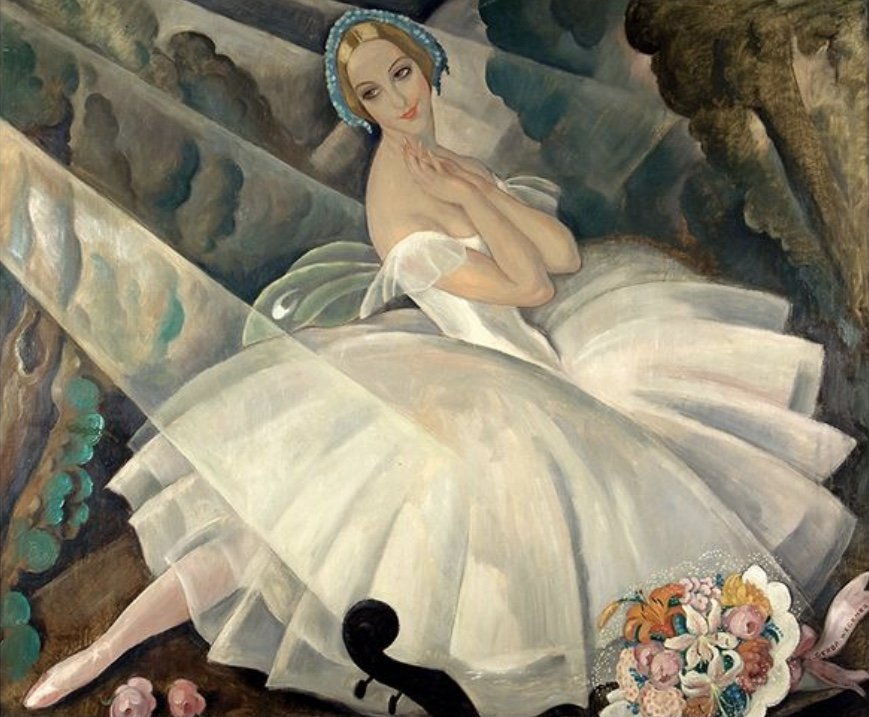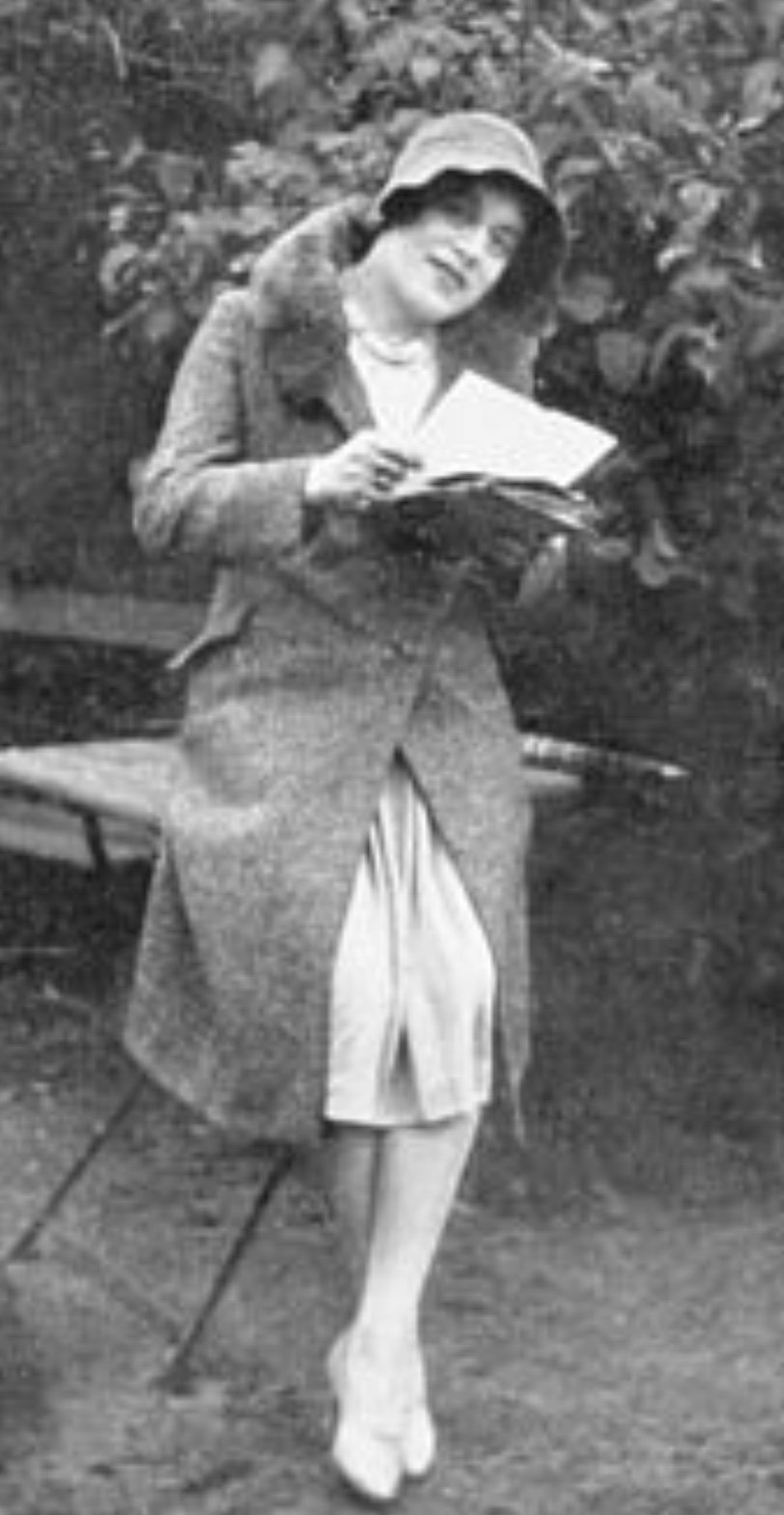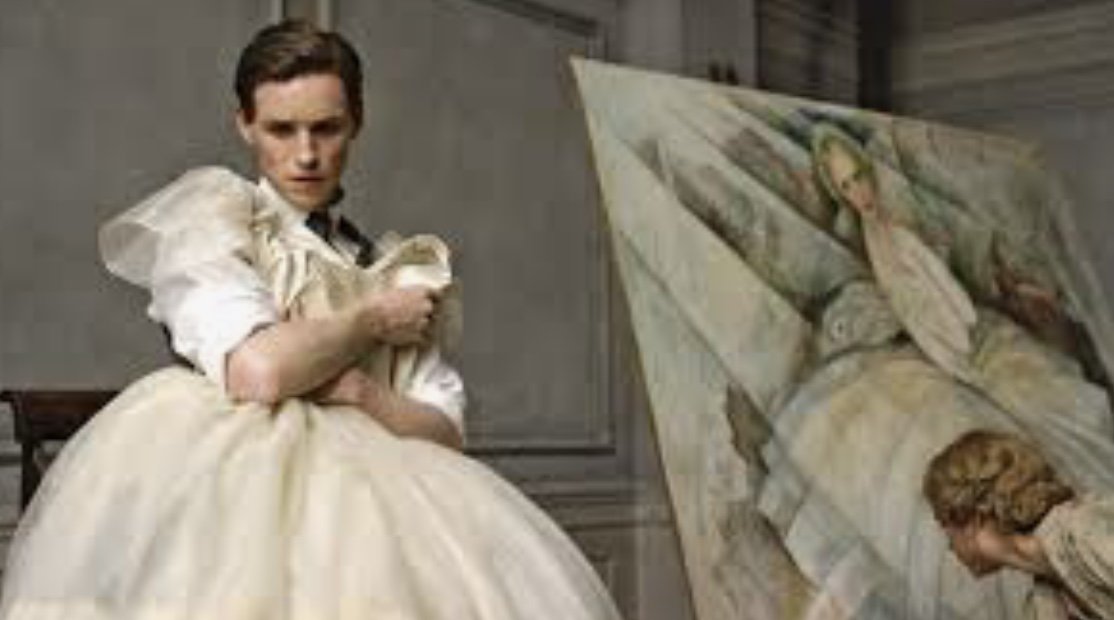“The Danish Girl” and George Balanchine
Some who have yet to see the film The Danish Girl (2015) may be interested to learn that it has a ballet connection. For those who have seen it, that ballet connection is obvious. But that connection is more complex/curious than the movie reveals.
The film tells the true, if partly fictionalized, story of Einar/Lili Wegener/Elbe, a pioneer (or martyr) of what we now call the transgender movement - the first gender-reassignment case - what we once would have called the first sex-change case, and of his/their/her wife, Gerda Gottlieb/Wegener. In both the film and real life, Einar and Gerda were artists. The movie starts in 1926. Gerda paints a Danish ballerina, Ulla (played by Amber Heard). On one occasion, when her model can't come to a session, Gerda (Alicia Vikander) asks Einar (Eddie Redmayne) to wear the ballerina's tights/stockings and shoes. Once Einar has done so, he finds his childhood ideas of being a woman inside a man's body are reawakened. (Those of us who have visited the old Royal Theatre in Copenhagen will immediately recognise theatre and city; I can't say how close the backstage-scenes are to those on screen.)
In the film, Einar and Gerda, though they have been married a few years, seem scarcely thirty, probably less. (Redmayne, playing Einar, was thirty-three when the film was released.) It is left unclear whether the action takes months or years. By the end, Einar has undergone two operations in Dresden to become Lili; and Gerda, his/her best friend, revisits him/her there. She has looked up Hans Axgil, the male cousin to whom he was attracted as a boy. Hans becomes a true friend to them both. The film implies Hans and Gerda become a couple at the end, after Lili has died.
History was slightly different, less cosy, and more peculiar. (The part-fictional book on which the film is based - same title - had some terrible reviews. Brush up your Danish to read this one in Politiken: http://politiken.dk/kultur/boger/ECE3019909/bogen-bag-filmen-the-danish-girl-er-fuld-af-fejl-og-krukket-sprog/ )
First, the film’s ballerina Ulla was Ulla Poulsen (1905-2001 - not to be confused with the Danish fencer Ulla Barding-Poulsen, 1912-2000), who was the leading Sylph of her day in Copenhagen, in August Bournonville’s 1836 “La Sylphide”. One account, though unclear, suggests she toured the United States in 1927. In 1930, long back in Denmark, she became George Balanchine's chief dancer and partner. The painting of her in the movie seems much the same as the one Gerda Wegener did of her in real life (illustration 1). Please note the calf and point shoe, not to mention the dress; in the movie, they are what Einar puts on to please his wife Gerda, with traumatic effects.
The real-life Poulsen went on dancing the title role of La Sylphide until 1939. Erik Bruhn, who saw her in his boyhood, preferred her to the later and more famous Sylph of Margrethe Schanne. According to Anna Kisselgoff in 1983 http://www.nytimes.com/1983/05/24/arts/sylphide-an-end-and-a-beginning-for-erik-bruhn.html , Schanne was ethereal, Poulsen was full-bodied, but Bruhn, as a boy dancing onstage in the Scottish reel, preferred Poulsen: "I saw her as a big beautiful blonde woman, very sensuous as the Sylphide. She was big but she floated." With that in mind, he encouraged ABT's bigger ballerinas, Cynthia Gregory and Martine van Hamel, to dance the Sylph that way: “And I say don't feel complexed about being big, use it."
Balanchine met Poulsen again in later visits to Copenhagen; colleagues of his remember his delight at their reunions. In I Remember Balanchine (1991, pp. 94-95), Poulsen relates how she first met Balanchine in London in 1929. She was studying there with Karsavina when her brother-in-law called from Copenhagen to say that the Danish ballet needed someone to choreograph a new ballet. Karsavina recommended Balanchine.
Balanchine worked in Denmark in 1930-1931; he revived there his 1928 masterpiece Apollo (Apollon musagète), with Leif Ørnberg in the title role. (Ørnberg, on whom I have written separately, later became uncle to Peter Martins, a more famous interpreter of Apollo.) Though the precise dates are hard to determine now, it’s likely that Balanchine first came to Denmark in summer 1930 (he was busy in London until at least March; his first Copenhagen choreography was in September) and left in either January 1931. Poulsen, like so many Danes after her, says “Our ballet was boring at the time. We had only some old Bournonville ballets; I wanted to see and learn something new... Our ballet was not on the level of the Russian ballet in technique, although we had our own Bournonville technique, which is not easy. But it was so different from what Balanchine had been used to!”
Balanchine’s first Danish choreography was to Liszt's "Liebestraum" (September 16, 1930, http://www.balanchine.org/balanchine/display_result.jsp?id=156&sid=&searchMethod=¤t=&stagings=&refs=1&tvs=) . Balanchine partnered Elna Jørgen-Jensen in a pas de deux, then danced with Elna Lassen and Ulla Poulsen in a pas de trois. Poulsen only speaks of the pas de trois: “His own role was not very big. He had stopped dancing because of his health, but I know it was something that he loved. Liebestraum was about a man who loves two women, but one he loves more. I was the woman he was leaving behind. It was a very emotional piece. First, we were together, then he didn't know which one he wanted. The dance was more mime, not so much a pas de deux. He had come to the Danish ballet and found that we had much expression. So he managed to make ballets with mime and emotion, instead of the Russian style with the brilliant dancing, turns, lifts, and technical solos.... The only thing I couldn't do was a real Balanchine ballet, because I had weak feet.”
It's startling to discover that Elna Lassen committed suicide only four days later. Poulsen says, “Elna Lassen was a beautiful dancer and a really fine person. She was very light, and she jumped very well. Balanchine was especially moved when she died, a suicide, to all our sorrow.” There was a special performance after her death, in which (according to Poulsen) “Balanchine danced the male role in ‘Chopiniana’. It was the only time that he danced it. He knew the ballet from his years with Diaghilev, and I don't think he changed anything. It was performed only the one evening. He danced very beautifully. At all the points where Elna Lassen should have danced, the spotlight was empty.” (Thus Balanchine anticipated the famous performance in 1931 after Pavlova's death in which “The Dying Swan” was played with just a spotlight to show her path across the stage.)
Lassen remained a Danish legend. In 1998 Flemming Flindt conflated her story with The Red Shoes in a ballet he made in Copenhagen, Red Shoes, or Legs of Fire. This was revived in 2001 for Ballet San José.
Between October and January, Balanchine staged his own versions/revisions of several other Fokine and Massine ballets in Copenhagen: The Polovtsian Dance from “Prince Igor”, The Three-Cornered Hat, La Boutique fantasque, The Legend of Joseph, and Le Spectre de la Rose (December 1930). Ulla Poulsen was the Miller's Wife in “The Three-Cornered Hat” http://www.balanchine.org/balanchine/display_result.jsp?num=101 (“I had just been in Spain taking lessons in Spanish dancing, so it was not so difficult for me. Spanish dancing in Bournonville was almost on pointe, but Balanchine used real Spanish dancing.”); the Sultan's Wife in "Scheherazade" http://www.balanchine.org/balanchine/display_result.jsp?num=102; the Young Girl in Le Spectre de la Rose or Rosendrømmen http://www.balanchine.org/balanchine/display_result.jsp?num=105 ("which I had learned from Karsavina in London”). Balanchine danced the Spectre with her (see illustration 2). “He made the male variation a little easier. There was no window for the big leap but Balanchine did it very well”). Poulsen was also Potiphar's Wife in Josef-Legende http://www.balanchine.org/balanchine/display_result.jsp?num=106 ("It had movement that we were not used to, but there was a great deal of mime. I was in an Egyptian garment. Unlike some of the other dancers, I could move in my costumes. I remember that Balanchine wanted me to sit on Børge Ralov's shoulder. Ralov was small and very thin. I said ‘Oh, I've never done that, not in Bournonville. What would Bournonville think?’ It was a sexy ballet. When Joseph would not go to bed with Potiphar's Wife, she was very angry. This was quite new for me and for the critics. They said it was new for the Sylphide. They didn't think I could do it. As Potiphar's Wife, I had to whip Joseph to get some excitement. It was rather terrible, because Joseph didn't want to have an affair with Potiphar's wife, so she had to get it another way. I could act.”)
Poulsen, who was painted by Gerda Wegener more than once (see illustration 3), married three times. Her first husband was Johannes Poulsen (1881-1938), an important actor and producer. She left the stage the year after his death. She then married Baron Christian Carl Otto Rosenørn-Lehn, a Danish aristocrat with a big manor house (more a castle); but that was not a success - he left her. Finally, she married the hotelman Helge Nordhal Skou (1903-1988), with whom she was happy for the rest of his life. She left Copenhagen, but not Denmark. Erik Aschengreen, the doyen of Danish dance critics, met her many times; and spoke to her both about her period with Balanchine in Copenhagen and about the ballet master Harald Lander.
Did Balanchine hear about Einar (Lili Elbe) and Gerda Wegener during the 1930-1931 months he was working in Copenhagen? It seems more than likely. A Danish court annulled the Wegeners’ marriage in October 1930, during Einar/Lili’s series of four operations to reassign gender; in legal terms, Einar Wegener changed both his/her name and his/her sex in legal terms; the case was sensational news in Denmark and Germany.
The real Einar/Lili (1882-1931) was plenty older than in the movie, as was Gerda (née Gerda Gottlieb, 1886-1940). Both painters, they were some twenty years older than their ballerina friend Ulla Poulsen. Einar/Lili has been called an intersex person, though this is a matter of dispute. He/she and Gerda Gottlieb married in 1904. The idea of dressing as a woman came not when Gerda painted Poulsen in the 1920s but earlier, when she painted the actress Anna Larssen: when Larssen was late for a sitting, Einar wore her attire; when Einar began to show a need to dress and act as a woman, it was Larssen who proposed the name Lili. By 1912, Einar and Gerda lived in Paris, the former openly as a woman, the latter as a lesbian. The public was shocked in 1913 when Gerda's paintings of a woman turned out to be of her husband.
By or before the 1920s, Einar had begun to adopt the persona of Lili Elbe. In 1930, Einar/Lili visited Dresden for the first of four operations to reassign his/her gender formally as that of a woman. By now, Ulla Poulsen had been a frequent model for Gerda's paintings. In October 1930, when Balanchine was busy with Poulsen & Co, the Danish courts invalidated the Wegeners' marriage. Lili had her fourth operation in June 1931 and died three months later. Her autobiography, Man into Woman: The First Sex Change Case, was first published in 1931, in Danish; then in German in 1933, after her death. An English-language edition was published in 2004. So surely Balanchine heard about it in the ballet canteen.
So was Gerda a lesbian? There have been disputes about this, too, but it’s now widely accepted she was. In the year of Einar's/Lili's death, Gerda (apparently devastated) married the Italian Major Fernando Porta, an Italian military officer, aviator, and diplomat. But your fears, as Dame Edna used to say to her audience, are well founded. She moved with Porta to Morocco, especially Casablanca and Marrakesh, and continued to paint, signing herself Gerda Wegener Porta. He, however, swindled her funds. In 1936, she obtained a divorce. In 1938, penniless, she returned to Denmark. By 1939, the year of her last exhibition, her work was out of style. She lived alone; she drank heavily; she died in 1940, a few months after the German invasion of Denmark. Her work has been exhibited again in recent years.
Balanchine returned to Copenhagen a number of times, notably in 1956-1957, when he remained there with his wife Tanaquil Le Clercq after she had been afflicted by polio. His very probable knowledge of Lili Elbe and Gerda Wegener becomes of interest when we consider the largely heteronormative character of his choreography. The 1920s had already seen experimentation with gender norms in the work of his Diaghilev predecessor, Bronislava Nijinska, whose choreography strongly influenced him in ways evident for many years. Balanchine was highly experimental in other ways, not least in some aspects of his portrayals of women. He was, however, actually retrogressive in terms of his portrayals of gender and sexuality.
19 January 2016, revised in Thursday 17 November, 2021
1: The Danish ballerina Ulla Poulsen, in the 1927 painting by Gerda Wegener shown in the 2015 film “The Danish Girl”.
2: Ulla Poulsen and George Balanchine in “Le Spectre de la Rose” (“Rosendrømmen”), 1930, Copenhagen
3: Ulla Poulsen, painted again by Gerda Wegener in 1934.
4: Ulla Poulsen, Danish ballerina
5: Ulla Poulsen Skou in her old age
6: The gravestone of Ulla Poulsen and her third husband (right).
7: Einar Wegener, later Lili Elbe, legally renamed as Lili Ilse Wegener
8: Lili Elbe (Einar Wegener)
9: Einar Wegener, “Poplars along Hobro Fjord”, 1908
10: Gerda Gottlieb Wegener, 1904
11: Lili Elbe, by Gerda Gottlieb
.
13: Lili Elbe, 1930
14: Poster for “The Danish Girl” film, 2015
15: Eddie Redmayne in “The Danish Girl” trying on the Sylphide dress of Ulla Poulsen














